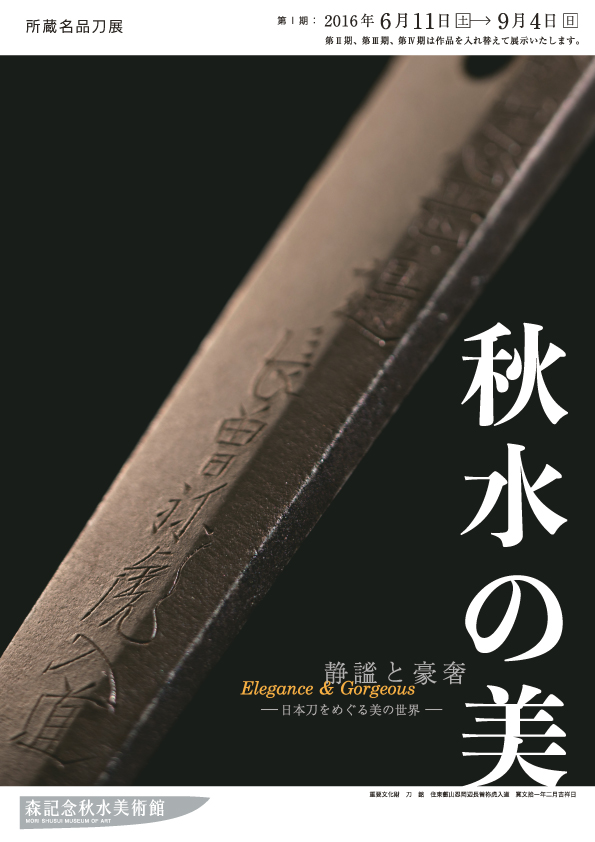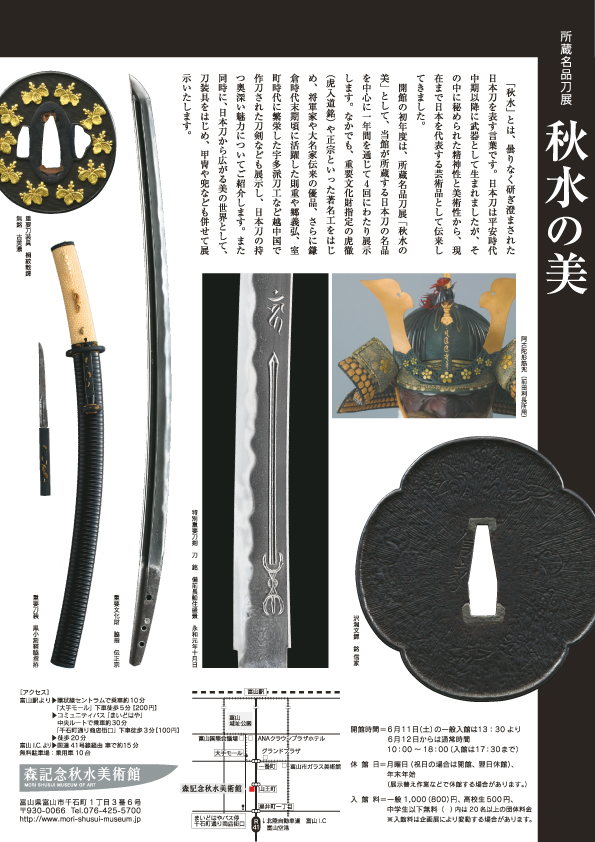“Shusui,” literally “autumn water,” is a term used to describe the pure, unclouded shine of polished Japanese swords. Though they were first produced as weapons back in the mid Heian period (10th and 11th c.), over time, the latent spirituality and artistic beauty of swords led them to be considered works of art that are representative of Japan, even today.
For our first year open, the museum is holding a four-part Shusui Beauty exhibit, with a focus on truly superb swords from the museum’s collection. This first session features such treasured heirlooms from the families of the shogun and daimyo (feudal lords) as the sword Kotetsu (signed “Tora Nyudo,” or “Tiger Monk”; Important Cultural Property) and a sword by the famous Masamune. The exhibition also includes swords from Etchu Province (present-day Toyama Prefecture), such as works by Norishige and Gou no Yoshihiro, who were active during the late Kamakura period (late 13th to early 14th c.), as well as swords from the Uda school, which flourished during the Muromachi period (14th to 16th c.). Alongside these, there are also other items like sword fittings, armor, and helmets on display, to share the beauty of the greater world of sword-related items.





 Back
Back